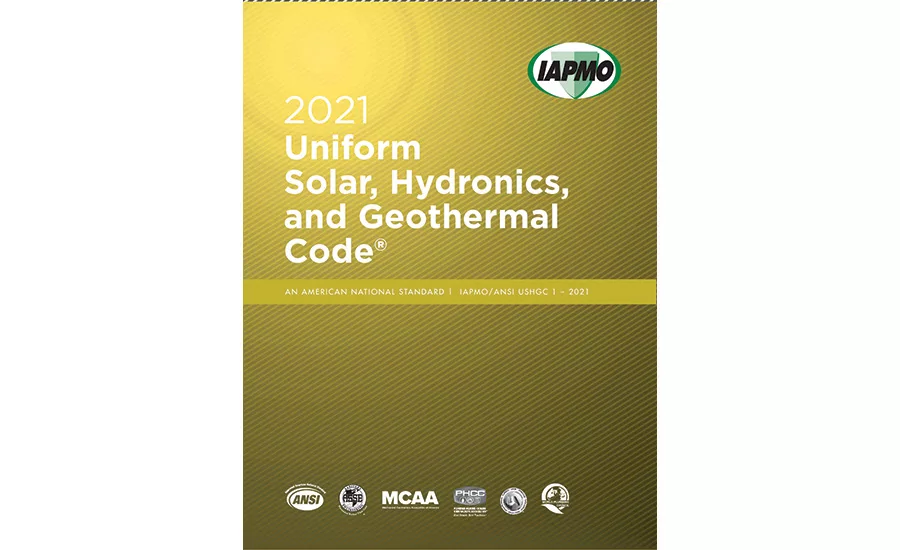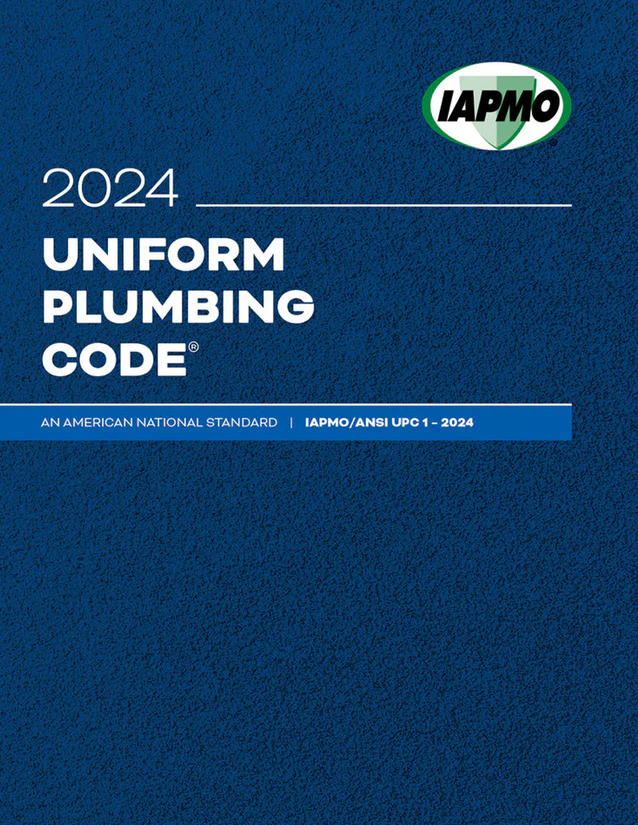Radiant Comfort Report
Development of the 2021 Uniform Solar, Hydronics & Geothermal Code

The Uniform Codes are designed to set the standard for safe plumbing, heating and mechanical systems while, at the same time, allowing latitude for innovation and new technologies.
Every three years the International Association of Plumbing and Mechanical Officials publishes a revised and updated version of its signature codes — the Uniform Plumbing Code and the Uniform Mechanical Code. These “model codes” are used by many states, and in some cases, individual municipalities as the basis for their own codes governing the installation and inspection of plumbing and mechanical projects in their jurisdictions. The Uniform Codes are designed to set the standard for safe plumbing, heating and mechanical systems while, at the same time, allowing latitude for innovation and new technologies.
IAPMO’s code development process is governed by its 2021 Consensus Code Development Cycle: Bylaws, Regulations, Procedures and Guidelines. IAPMO’s Uniform Codes are unique in that they are also American National Standards, meaning that IAPMO’s procedures have been approved by the American National Standards Institute in recognition of its adherence to a strictly-defined “consensus” process. Consensus is defined in ANSI Essential Requirements: Due process requirements for American National Standards as follows:
“Consensus means substantial agreement has been reached by directly and materially affected interests. This signifies the concurrence of more than a simple majority, but not necessarily unanimity. Consensus requires that all views and objections be considered, and that an effort be made toward their resolution.”
Another less well-known model code is IAPMO’s Uniform Solar, Hydronics and Geothermal Code. The USHGC is also undergoing its three-year update at this time in preparation for a 2021 release, and the new version is expected to have considerable enhancements to the hydronics and geothermal provisions once the code development process is complete. A short description of IAPMO’s process for developing a new version of an ANS is as follows.
- A public announcement of IAPMO’s intent to revise an ANS is made publicly via press release and via ANSI’s Standards Action weekly newsletter. This announcement includes a call for proposed changes to the standard. Anyone can propose a change to an ANS.
- At the same time, a call for volunteers to become members of a Technical Committee to participate in the development goes out. For the USHGC TC, IAPMO sought manufacturer, user, installer/maintainer, labor, research/standards/testing laboratory, enforcing authority, consumer and special expert members.
- IAPMO issues a notice of public availability of a “Monograph” containing all of the proposed changes to the code, accompanied by a notice of the first in-person meeting of the TC where each of the proposals will be considered. Anyone can attend a TC meeting, and those materially affected are encouraged to participate.
- In the case of the June 2019 USHGC TC meeting, the committee acted on 75 public proposals and generated one Technical Committee proposal. Topics discussed included chemical additives and corrosive fluids; pressure and safety devices for hydronic systems; water-source and air-source heat pumps; insulation thickness requirements for solar thermal system piping and tubing; closed-loop and DX geothermal systems; material and installation provisions for geothermal systems; and new listing requirements for PV systems.
- Following the TC meeting on Sept. 9, a document known as a “Report on Proposals” was publicly released by IAPMO. This document includes a description of the TC action during the June meeting on each of the proposals submitted, along with a copy of the 2021 USHGC as it would read if it were published as per the TC actions. However, a public comment period began in October and ends in January 2020, during which anyone can submit comments on the ROP.
- Final actions on the USHGC include another Report on Comments, another TC meeting in May 2020, balloting of the TC through June, and a finished product in the November timeframe to be published in early 2021.
HYDRONICS
The Hydronics section of the draft 2021 USHGC covers critical areas of topics addressing the installation, inspection and maintenance of liquid-based (hydronic) heating and cooling systems. IAPMO is coordinating the provisions of the USHGC with its Uniform Mechanical Code so municipalities adopting the USHGC will avoid code conflicts. Hydronic heating and cooling systems are becoming the technology of choice for increasing numbers of net-zero energy building designs, based on higher efficiency and lower operating cost. To gain an understanding of the scope of the hydronics section of the code, following is the draft 2021 USHGC Chapter 4 Table of Contents:
Pre-print: Uniform Solar, Hydronics & Geothermal Code; Chapter 4 Hydronics
401.0 General
402.0 Protection of Potable Water Supply
403.0 Capacity of Heat Source
404.0 Identification of Piping Systems
405.0 Installation, Testing and Inspection
406.0 Heating Appliances and Equipment
407.0 Expansion Tanks
408.0 Materials
409.0 Joints and Connections
410.0 System Controls
411.0 Pressure and Flow Controls
412.0 Hydronic Space Heating
413.0 Steam Systems
414.0 Radiant Heating and Cooling
415.0 Indirect-Fired Domestic Hot-Water Storage Tanks
416.0 Snow and Ice Melt Systems
417.0 Piping Installation
GEOTHERMAL
Since residential and commercial geothermal heating and cooling systems are today being selected for the renewable energy component of HVAC construction projects, IAPMO believes that municipalities will see the value of incorporating a building code component developed by geothermal professionals which addresses the critical aspects of geothermal system design and construction. To gain an understanding of the scope of the geothermal section of the code, following is the draft 2021 USHGC Chapter 7 Table of Contents:
Pre-print: Uniform Solar, Hydronics & Geothermal Code; Chapter 7 Geothermal Energy Systems
701.0 General
702.0 Groundwater Systems
703.0 Design of Systems
704.0 Installation
705.0 Specific System Components Design
706.0 Ground-Heat Exchanger Testing
707.0 Heat Pump and Distribution System Design
708.0 System Start-Up
All of these proposed improvements to the code may be viewed at IAPMO’s Codes page at https://tinyurl.com/y26waxe5. Given that many aspects of hydronic and geothermal system design and installation are not covered in other codes, jurisdictions should seriously consider adopting the USHGC to assure that building officials have guidelines available to help them to assure quality for both residential and commercial end-users.
Looking for a reprint of this article?
From high-res PDFs to custom plaques, order your copy today!





